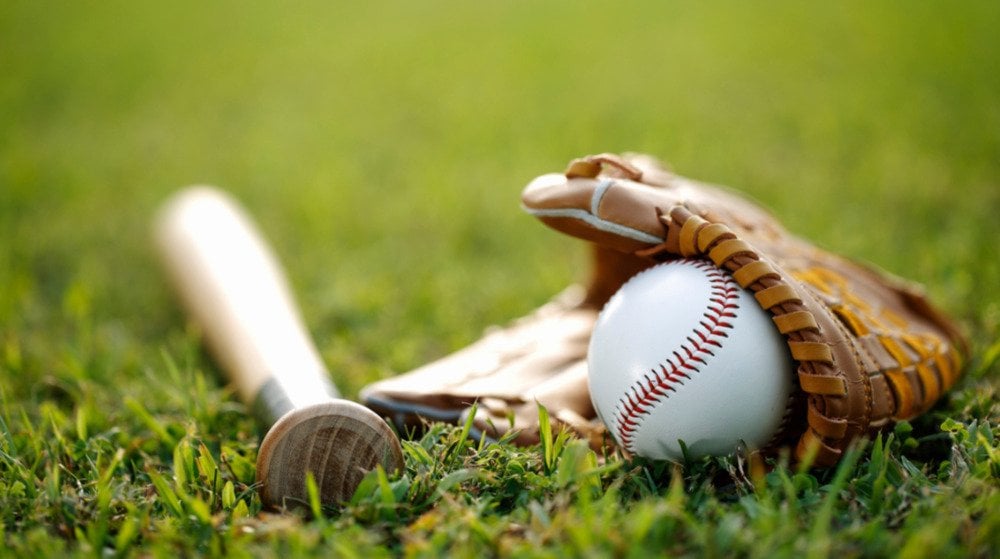Cycling is an incredible and enjoyable way to stay fit, enjoy your surroundings and get from A to B. But - whether you’re riding a quiet country lane or bombing down a rocky trail, there is one constant, and that is that you’re vulnerable. Unlike being in a car, there isn’t anything between you and the road or the trail except your skill - and the gear you wear.
The right protective equipment can mean the difference between walking away from a crash or spending weeks away from your bike recovering from an injury. This guide covers all the essentials that every adult cyclist should own, plus all the extra gear worth considering for certain types of riding.
Why protective gear is important
Even at low speeds, cycling accidents can cause serious injuries. A front wheel catching a pothole, a driver pulling out unexpectedly - all of these things can result in a fall. Sometimes it only takes a momentary lapse in concentration and unfortunately this can mean you are away from your bike for at least a few weeks when you’re recovering.
Without significant enough protection, it’s unfortunately very common for cyclist to suffer from the following:
- Head trauma - from impact with the road or obstacles
- Eye injuries from flying debris, bugs or branches
- Hand and wrist damage - we instinctively put our hands out to break a fall
- Cuts, bruises and fractures to knees, elbows and shoulders
- Road rash - painful skin abrasions that can take weeks to heal
Protective gear does not make you invincible. But it will absorb impact, reduce abrasion and ultimately give you the best chance of walking away from an impact with minor scrapes instead of major and sometimes life-changing injuries.
The essentials - don’t ride without these
Helmet
Your brain is irreplaceable - you must protect it when cycling. Studies show helmets can reduce the risk of head injury by around 50% and serious brain injury by even more than that in a cycling accident. Impacts don’t just come from a high speed collision - even something as simple as tipping over at a junction can cause a head injury.
Without a helmet, even a minor collision can result in a concussion or skull fracture. Sadly some cyclists without wearing helmets have been involved in impacts that have resulted in lasting cognitive damage. If you buy one thing on this list, let it be this - it’s super dangerous to ride a bike without a helmet.
We’d recommend the 100% Altis Helmet - lightweight, well-ventilated, and features SmartShock technology to reduce rotational impacts. Ideal for road, gravel and trail riding.
Protective eyewear
Your eyes are constantly at risk when riding - grit flicked up by cars, insects flying about on summer evenings, low-hanging branches when you’re riding through trails, even harmful UV rays when it’s bright outside (and this in particular is something many people don’t consider). And if you can’t see, you can’t navigate - loss of vision for even a split second can cause a crash.
Without proper eyewear, you might end up with corneal scratches, swelling from impact - or even long-term vision damage from UV exposure.
We’d recommend the 100% Speedcraft range - they give a wide field of vision, impact-resistant lenses and optical clarity in all light conditions. They’re perfect for keeping your eyes safe and focused on the road or trail ahead.
Gloves
Hands are usually the first thing to hit the ground in a fall - and this makes them particularly prone to cuts, abrasions and fractures. Gloves also improve your grip in wet or sweaty conditions, and this can be the difference between maintaining control or losing it on a descent.
Without gloves, you will end up with your hands shredded after a fall - and this will make it painful not only to brake and steer your bike, but to even work or do normal, everyday things for days or weeks afterwards.
We’d recommend the 100% Ridecamp Gel Gloves - breathable, padded palms to absorb impact, plus a slip-on fit for all-day comfort.
High-visibility and lighting
While some collisions happen because the rider was careless, couldn’t see or wasn’t paying attention - most collisions between bikes and vehicles happen because the driver didn’t see the cyclist in time. Usually that’s because either the cyclist didn’t have lights on or the driver wasn’t paying enough attention, but fundamentally it doesn’t matter what the cause was if you end up getting hurt.
While you can’t control whether someone else is careless on the road, you can make sure you’re seen with visibility gear. Bright colours, reflective accents and good lights reduce the risk of you getting hurt dramatically.
Without it, you’re relying entirely on other people’s attentiveness - not a safe bet on a busy road, or in low light or bad weather.
We’d really recommend a front white light and rear red light with high-vis elements on your helmet, jacket or gloves.
Padded cycling shorts
Discomfort isn’t just unpleasant, it can cause you to shift your position awkwardly while riding, affecting your control and increasing your risk of injury. Padded shorts reduce chafing, absorb road vibration and allow you to ride longer and harder without fatigue.
Padded shorts are essential for comfort because saddle sores and skin irritation can cut your rides short - and sometimes, can put you off cycling altogether.
We’d recommend the 100% Crux Liner Shorts - they’re moisture wicking, chamois-padded liners that fit under any shorts or trousers.
Optional but recommended for certain types of riding
While you can go cycling without the following, we wouldn’t recommend it. Nobody thinks they’ll get into an accident until they do, and you’re best being as prepared as you possibly can be. With the following gear, you’re well on your way to being one of the most protected cyclists on the road or trail.
Knee guards
Knees, along with hands, are one of the first parts of the body to hit the ground in a crash, especially when mountain biking or BMX. Pads protect against cuts, bruises and more serious ligament damage. And this doesn’t just apply if you’re wearing shorts - longer trousers won’t provide much protection against stones or rocks if you take a fall.
Without a set of knee pads, even a low-speed fall on rocky terrain can leave you limping for weeks on end. We’d recommend the 100% Teratec Knee Guards - slim, breathable and designed for pedalling comfort.
Elbow guards
Elbows are another high-impact area when cyclists take the fall - in fact, they’re probably the third impact after the knees and hands. Protecting your elbows helps prevent painful abrasions or fractures. Without pads, an elbow injury can make even gentle riding or daily tasks extremely painful.
We recommend the 100% Teratec Elbow Guards - lightweight sleeve style pads with flexible impact protection.
Chest and back protection
For aggressive or technical terrain this can be a life-saver. If you ride downhill, do jumps or tackle rocky technical trails, a torso protector can absorb the force of high-impact crashes and protect your spine and ribs. Spinal injuries are no joke and can be life-changing, and without chest and back protection, a heavy fall can also cause rib fractures or deep bruising that might even keep you off your bike for a very long time.
We’d recommend the 100% Tarka Protection Vest - SmartShock armour for back and chest with ventilation for comfort.
Full-face helmet
For downhill MTB, BMX racing or freeride, a standard helmet leaves your face and jaw exposed. That’s fine for road or trail cycling, but if you’re doing gravity riding, the top of your head might not be the bit that hits the ground first. Full-face helmets will protect everything from your chin to your cheekbones.
Without a full-face helmet, if you crash face-first you could be looking at broken or chipped teeth, jaw fractures or even deep facial lacerations.
We’d recommend the 100% Trajecta Helmet - it’s lightweight, breathable and fitted with SmartShock for advanced head protection.
Choosing the right combination of gear
There’s no single one-size-fits-all kit for every rider - your protective gear should match the type of cycling you do most often, the conditions you ride in, and your personal risk tolerance. The goal is to balance safety with practicality. For example - if you ride a road bike into town once per week, you probably don’t need a full-face helmet. Conversely if you’re out on the trails every weekend doing MTB, and you don’t have a helmet at all, you’re taking a highly unnecessary risk.
Road and commuting riders
If you ride on tarmac, your main risks are collisions with vehicles, poor visibility in traffic and minor falls at junctions or in bad weather. Focus on a helmet (always wear one, even for short trips), protective eyewear (keeps your vision clear in traffic), gloves (protects you in the event of a fall and help you maintain grip in rain), high visibility gear and lighting (so drivers can see you) and padded shorts (keeps you comfortable and reduces chafing.)
You probably don’t need anything heavier-duty than this, but visibility and comfort are very important.
Trail and gravel riders
This usually involves hazards like loose rocks, tree roots and unpredictable surfaces. Falls are more likely, surfaces are harder and more abrasive than tarmac or concrete. In addition to the road/commuting essentials, we’d recommend buying:
- Knee pads (saves you from painful bruises and cuts on technical sections)
- Elbow pads (worth considering if you ride rocky or wooded trails)
- Durable eyewear (blocks mud, branches and bright sunlight)
Trail riding often means being far away from immediate help, so preventing injury is even more important. Make sure you’re buying the most suitable gear - the above is not an exhaustive list, and if you feel you need more, you should buy it.
Downhill, freeride and BMX riders
These are high risk disciplines. Speeds are faster, jumps are bigger and terrain is more technical. You might get away with a single helmet and gloves on the road, but not here. You need full coverage - including:
- Full face helmet to protect your jaw as well as your head
- Knee and elbow pads - takes the brunt of falls on hard surfaces
- Chest and back protection - guards your spine, ribs and internal organs from major impact
- High-grip gloves - essential for control during high-speed descents
This is where we’d really recommend investment in top-tier gear - because an accident will be very unforgiving. Pay attention to fit - ill-fitting gear won’t protect you properly and can even cause accidents by restricting movement or vision. Make sure to replace your gear when it’s worn - particularly pads, helmets and gloves lose effectiveness over time or after a crash.
Where to buy the best-quality cycling gear
When it comes to protective gear, quality directly affects safety. Cheaper products may lack proper impact certification, use inferior materials or fail prematurely. We’ve built our reputation on gear that’s engineered for riders - from road enthusiasts to professional downhill racers.
Buying your cycling gear from 100percent.com means:
- Certified safety standards - many of our products carry certifications to prove they meet or exceed international impact protection requirements.
- Rider-focused design - ergonomics, ventilation and durability are all tested in real-world conditions to make sure they hold up.
- Wide range of gear - whether you’re commuting or riding World Cup downhill, there’s a product designed for your needs.
- Consistent quality - trusted by professional athletes and weekend riders alike.
If you’re unsure where to start, the combinations in this guide are proven, balanced setups for different riding styles. The best approach is to invest in the core essentials now, and gradually add discipline-specific gear as your cycling ambitions grow.





